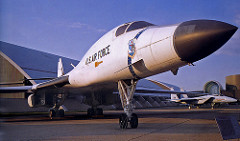The conflict between the world’s two superpowers, the Soviet Union and the United States, is often referred to as the Cold War, which is considered the largest non-conflict engagement in the history of the world. Both sides had their respective allies, with the USA leading NATO and controlling Western Europe, while the Soviet Union led the Warsaw Pact and controlled Eastern Europe.
The Cold War, which began immediately after World War II ended in 1945, saw little direct military engagement between the two sides, hence the term “cold.” However, there were instances of indirect military action during the Vietnam and Korean Wars, which took place while the Cold War was ongoing.
After the defeat of the Japanese and Nazi armies in World War II, the USA and the USSR emerged as the two major powers. They had different economic and governmental systems, with the Soviet Union operating under a Communist government and the United States following a capitalist system. Due to conflicting ideologies and interests, direct rivalry ensued between the two superpowers.
Instead of finding common ground, the two ideologies became increasingly polarized. The Cold War further escalated as the Soviet Union spread its Communist ideals and engaged in invasions and expansions, causing anxiety and insecurity in the West. The construction of the Iron Curtain, which divided Europe, symbolized the separation between the two sides. The West responded with the implementation of the Truman Doctrine, providing military and financial assistance to countries resisting Communism.
By the early 1960s, Europe was divided into two blocs, creating a potential battleground for a looming World War III and the threat of nuclear warfare. Eventually, the Cold War extended its influence worldwide, drawing in smaller nations and further dividing the planet.
The Cold War had significant geopolitical implications, shaping international relations and alliances for decades. It was a period characterized by ideological clashes, proxy wars, and the constant threat of nuclear confrontation, until the collapse of the USSR in 1991 marked the end of the Cold War era.
Manuel Marino is a seasoned Senior Producer, Music Composer, and Artist with over a decade of experience. He specializes in branded entertainment across various mediums, including video games, films, and advertising campaigns. With 20+ years as a game music composer, Manuel has worked on numerous platforms, creating diverse orchestral soundtracks. HIRE ME


 Manuel is a passionate, driven, and techsavvy AV technician,
Manuel is a passionate, driven, and techsavvy AV technician, 










